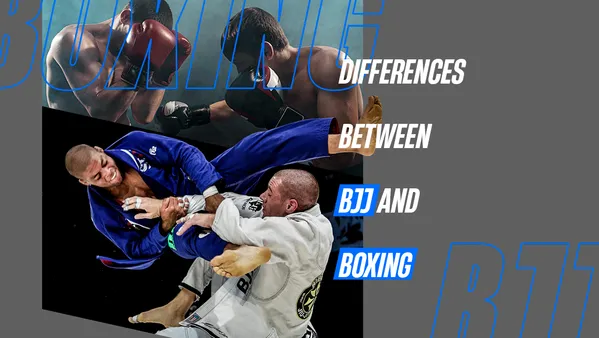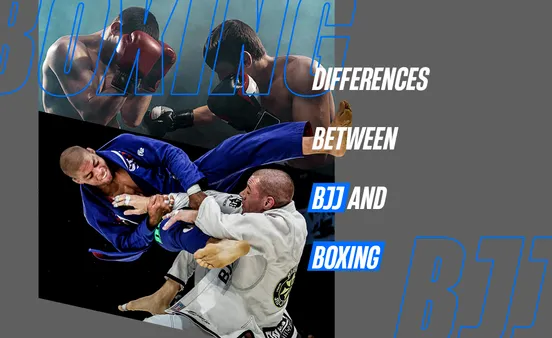Table of Contents
Welcome to Kizworld, your ultimate destination for exploring the captivating world of boxing. In this comprehensive guide, we delve into the intricacies of the sport, uncovering the "The difference between boxing" and other combat sports. Discover the unique characteristics that set boxing apart, from its rich history and diverse types to the thrilling techniques and competitions that define the sweet science. Whether you're a seasoned enthusiast or a curious newcomer, prepare to be enthralled as we embark on a journey through the world of boxing, uncovering the secrets that make it one of the most captivating sports on the planet.
The Difference Between Boxing and Other Combat Sports: A Comprehensive Guide
I. Boxing: A Contact Sport with Two Main Variants
Boxing: A Contact Sport with Two Main Variants
Boxing, a captivating combat sport, has enthralled audiences for centuries with its raw power, strategic finesse, and unwavering determination. This exhilarating sport, governed by a strict set of rules, showcases the athleticism and resilience of its participants as they engage in a captivating dance of punches and footwork. Whether you're a seasoned enthusiast or a curious newcomer, this comprehensive guide will take you on a journey through the world of boxing, exploring its rich history, diverse variants, and the captivating techniques that define this iconic sport.
Boxing, with its origins dating back to ancient civilizations, has evolved into a modern-day spectacle that continues to captivate audiences worldwide. From the legendary gladiators of the Roman Empire to the celebrated pugilists of the 19th century, boxing has witnessed a parade of iconic figures who have left an indelible mark on the sport's storied history. Today, boxing boasts a global following, with millions of fans tuning in to witness the electrifying clashes between some of the world's most skilled and determined athletes.
- Related Post: The History and Evolution of Boxing
- Related Post: Famous Boxers
Professional Boxing: A Thrilling Spectacle of Skill and Strength
Professional boxing, the most widely recognized variant of the sport, pits two highly trained athletes against each other in a regulated bout. Governed by strict rules and overseen by experienced referees, professional boxing demands exceptional physical prowess, technical ise, and unwavering mental fortitude. Boxers engage in a series of three-minute rounds, exchanging punches with lightning speed and precision, all while adhering to the sport's intricate rules and regulations.
Professional boxing has produced some of the most iconic athletes in sports history, with legends like Muhammad Ali, Mike Tyson, and Manny Pacquiao captivating audiences with their extraordinary skills and captivating personalities. These pugilists have transcended the sport, becoming cultural icons and inspiring generations of aspiring boxers.
- Related Post: The Top Boxing Competitions and Events
- Related Post: The Most Famous Boxers and Champions of All Time
Amateur Boxing: A Pathway to Excellence and Olympic Glory
Amateur boxing, while less glamorous than its professional counterpart, serves as a vital breeding ground for future boxing stars and a pathway to the Olympic Games. This variant of the sport emphasizes technical proficiency, sportsmanship, and the development of fundamental boxing skills. Amateur boxers compete in various weight classes and age groups, honing their skills and gaining valuable experience before potentially transitioning to the professional ranks.
Amateur boxing has produced numerous Olympic legends, including Sugar Ray Leonard, Oscar De La Hoya, and Floyd Mayweather Jr., all of whom went on to achieve great success in the professional arena. The Olympic Games provide an unparalleled stage for amateur boxers to showcase their talent and represent their countries with pride.
- Related Post: How to Get Started with Boxing as a Beginner
- Related Post: The Benefits of Boxing for Physical and Mental Health
II. Unveiling the Differences: Boxing vs Kickboxing
Unveiling the Differences: Boxing vs Kickboxing
In the realm of combat sports, boxing and kickboxing stand as two prominent disciplines, captivating audiences with their distinct techniques and strategies. While both share the common goal of striking an opponent, they diverge in several aspects, creating unique and thrilling experiences for both participants and spectators alike.
A notable difference between boxing and kickboxing lies in the permitted striking zones. In boxing, punches are restricted to the front of the body above the waist, including the head and torso. Kickboxing, on the other hand, expands the striking area to include kicks, allowing combatants to target the legs, knees, and head.
- Permitted striking zones: Boxing focuses on punches to the front of the body, while kickboxing encompasses both punches and kicks to various parts of the body.
- Footwork and movement patterns: Boxing emphasizes footwork and head movement to evade punches, whereas kickboxing incorporates more dynamic footwork and evasive maneuvers to avoid both punches and kicks.
The distinct striking zones demand different approaches to footwork and movement patterns. Boxers rely on quick footwork and head movement to evade punches, often maintaining a closer proximity to their opponents to deliver powerful punches. Kickboxers, on the other hand, employ more dynamic footwork and evasive maneuvers to avoid both punches and kicks, maintaining a slightly greater distance to create openings for their strikes.
Another key difference between boxing and kickboxing lies in the allowed techniques. Boxing permits only punches, emphasizing jabs, crosses, hooks, and uppercuts. Kickboxing, however, incorporates a wider range of techniques, including punches, kicks, knees, and elbows. This diversity of techniques adds an extra layer of complexity and excitement to kickboxing matches.
- Techniques allowed: Boxing centers around punches, while kickboxing encompasses a wider range of techniques including punches, kicks, knees, and elbows.
- Protective gear: Boxers typically wear boxing gloves and headgear, while kickboxers may use a variety of protective gear including gloves, shin guards, and mouthguards.
- Scoring system: Boxing matches are scored based on the number of clean punches landed, while kickboxing matches consider both punches and kicks in determining the winner.
The difference in techniques also necessitates variations in protective gear. Boxers typically wear boxing gloves and headgear, providing protection for their hands and head. Kickboxers, on the other hand, require additional protective gear such as shin guards and mouthguards due to the inclusion of kicks and knees in their arsenal.
Finally, the scoring system in boxing and kickboxing differs significantly. In boxing matches, judges primarily evaluate the number of clean punches landed to determine the winner. Knockouts and technical knockouts result in immediate victories. Kickboxing matches, on the other hand, take a more comprehensive approach, with judges considering both punches and kicks when determining the victor. Knockdowns also play a significant role in the scoring system, with fighters earning additional points for knocking down their opponents.
III. Exploring the Similarities: Common Ground Between Boxing and Kickboxing
Exploring the Similarities: Common Ground Between Boxing and Kickboxing
Boxing and kickboxing, two captivating combat sports, share a rich history and a common goal: to test the limits of human endurance, strength, and skill. While each discipline possesses unique techniques and strategies, they converge in several fundamental areas, creating a fascinating interplay of similarities that enriches the experience for both athletes and spectators alike. Let's delve into the shared territory between boxing and kickboxing, uncovering the common ground that unites these two dynamic sports.
- Physical Conditioning: Both boxing and kickboxing demand exceptional physical fitness, requiring athletes to possess a combination of strength, speed, agility, and endurance. Intense training regimens, incorporating rigorous cardiovascular exercises, weightlifting, and skill-specific drills, are essential for success in both disciplines.
- Striking Techniques: At the core of both boxing and kickboxing lies a shared emphasis on striking techniques, where fighters utilize their hands and feet to deliver powerful and accurate blows. Punches, such as jabs, crosses, hooks, and uppercuts, form the foundation of boxing's offensive arsenal, while kickboxing expands this repertoire to include devastating kicks, including roundhouse kicks, front kicks, and side kicks, aimed at various targets on the opponent's body and head.
- Defensive Maneuvers: To effectively counter their opponents' attacks, boxers and kickboxers employ a diverse range of defensive maneuvers. Head movement, footwork, and skillful blocking techniques are crucial for evading strikes and maintaining a strong defensive posture. Additionally, both disciplines emphasize the importance of maintaining a balanced stance, allowing for quick adjustments and rapid counterattacks.
- Ring Awareness and Strategy: Success in boxing and kickboxing demands a keen understanding of the ring and the ability to adapt strategies based on the opponent's strengths and weaknesses. Fighters must possess the tactical acumen to read their opponent's movements, anticipate their attacks, and capitalize on openings to deliver effective strikes. Adaptability and ring awareness are essential traits shared by both boxing and kickboxing athletes.
Boxing | Kickboxing |
Boxing gloves | Boxing gloves |
Hand wraps | Hand wraps |
Mouthguard | Mouthguard |
Headgear (optional) | Headgear (optional) |
Groin protector (male) | Groin protector (male) |
Boxing shoes | Boxing shoes or kickboxing shoes |
Shorts | Shorts or kickboxing pants |
In conclusion, the shared elements between boxing and kickboxing create a compelling narrative of similarities, showcasing the interconnectedness of these two combat sports. Despite their distinct techniques and target areas, both disciplines demand exceptional physical conditioning, emphasize striking prowess, prioritize defensive strategies, and require a deep understanding of ring tactics. These commonalities not only enrich the experience for athletes and fans but also highlight the universal appeal of combat sports, where human resilience, skill, and determination take center stage.
Visit Kickboxing and Boxing for more detailed information about each sport.
IV. Choosing Your Path: Factors to Consider When Selecting a Combat Sport
Choosing Your Path: Factors to Consider When Selecting a Combat Sport
With a plethora of combat sports to choose from, selecting the one that aligns with your goals and preferences can be daunting. To help you navigate this decision, consider the following factors:
- Your Fitness Goals: Are you seeking a sport that enhances cardiovascular health, builds strength, or improves flexibility?
- Your Personality: Do you prefer individual or team sports? Are you competitive or more interested in self-improvement?
- Your Skill Level: Are you a beginner or have prior experience in combat sports? Some sports may have a steeper learning curve.
- Your Time Commitment: Consider the time required for training, competitions, and travel.
- Your Budget: Some combat sports may require specialized equipment or training facilities, which can impact your budget.
Once you have a clearer understanding of your preferences and limitations, you can start exploring specific combat sports. Here are a few popular options to consider:
- Boxing: A classic combat sport that emphasizes punching techniques and footwork. Learn more about boxing.
- Kickboxing: A hybrid sport that combines elements of boxing, karate, and Muay Thai. Learn more about kickboxing.
- Muay Thai: A martial art from Thailand known for its use of elbows, knees, and shins in addition to punches and kicks. Learn more about Muay Thai.
- Jiu-Jitsu: A grappling-based martial art that focuses on ground fighting and submission holds. Learn more about Jiu-Jitsu.
- Karate: A traditional martial art that emphasizes striking techniques, blocks, and evasive maneuvers. Learn more about Karate.
Remember, the best combat sport for you is the one that you enjoy and can stick with consistently. Take the time to research different options, try out a few classes, and choose the one that resonates with you.
V. Conclusion
As the final bell rings, we come to the end of our exploration into the captivating world of boxing. From its storied history to its dynamic techniques, boxing has proven to be a sport that demands respect and admiration. Whether you choose to step into the ring as a competitor or remain a passionate spectator, the lessons learned from boxing extend far beyond the physical realm. The discipline, perseverance, and resilience fostered in the boxing gym are invaluable qualities that can be applied to all aspects of life. As the sweet science continues to evolve, one thing remains certain: boxing's legacy as a sport that tests the limits of human potential will endure for generations to come.